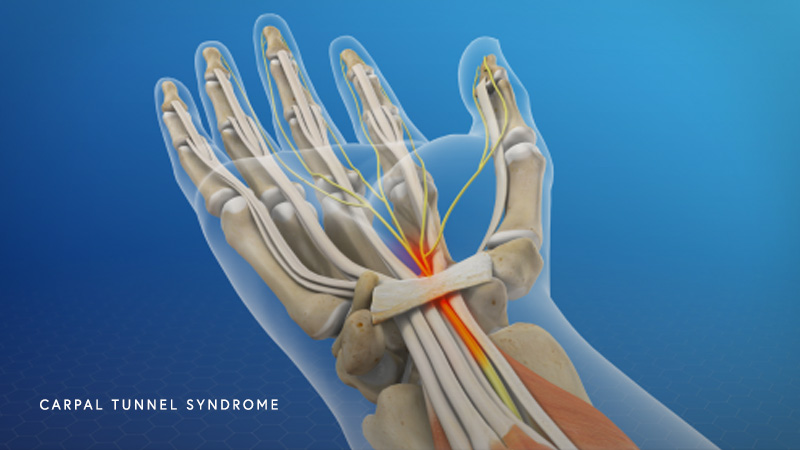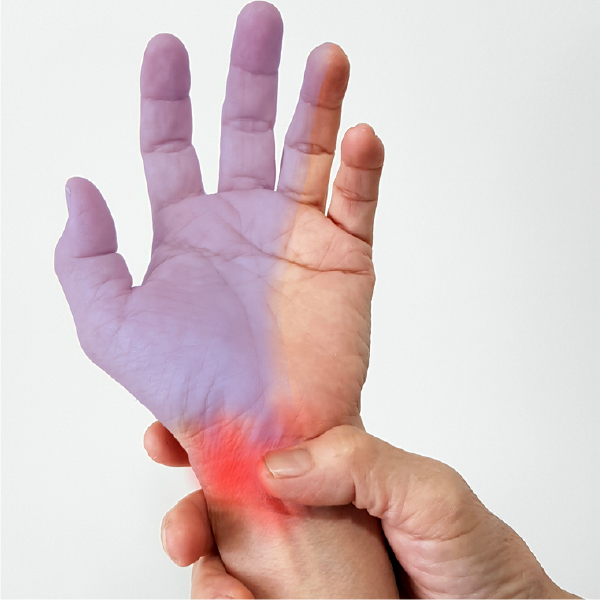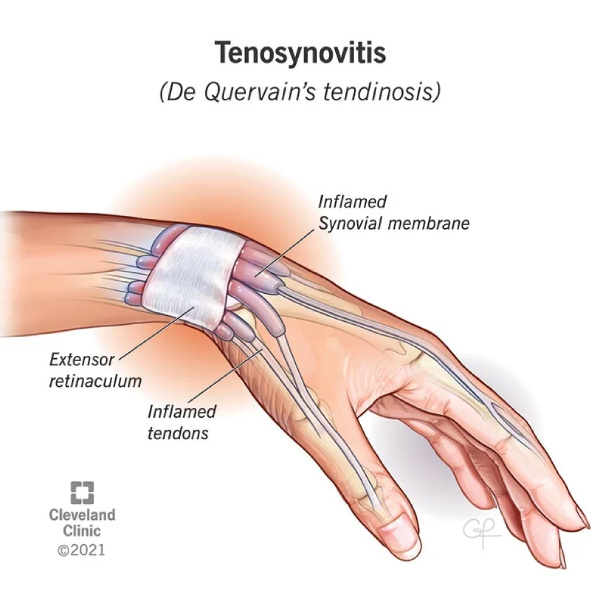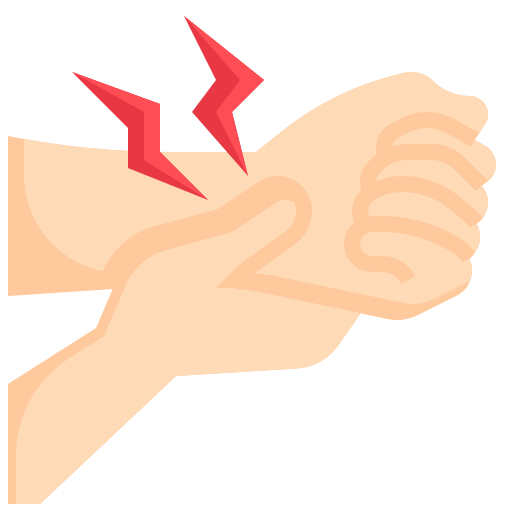Carpal tunnel syndrome and wrist pain can significantly impact an individual’s ability to perform everyday tasks. For veterans who developed these conditions during their military service, they may be eligible for disability benefits through the Department of Veterans Affairs (VA). The VA disability rating for wrist pain and carpal tunnel takes into account the severity of the condition and how it affects the veteran’s ability to work and carry out daily activities. Understanding the rating process can help veterans navigate the claims process and receive the compensation they deserve. Read on to learn VA Disability Rating for Wrist Pain & Carpal Tunnel.
What Is Carpal Tunnel?
Carpal tunnel syndrome (CTS) is a common condition that affects the hand and wrist. It occurs when the median nerve, which runs from the forearm into the palm of the hand, becomes compressed or squeezed as it passes through the narrow passageway called the carpal tunnel. The carpal tunnel is a narrow, rigid tunnel-like structure located in the wrist, formed by the bones and connective tissues.

The main function of the median nerve is to provide sensation to the thumb, index finger, middle finger, and part of the ring finger, as well as control certain muscles in the hand.
What is Carpal Tunnel Syndrome in Veterans?
Carpal Tunnel Syndrome (CTS) is a common and painful condition that can affect veterans and individuals from various walks of life. It occurs when the median nerve, which runs from the forearm through the carpal tunnel in the wrist to the hand, becomes compressed or irritated. The carpal tunnel itself is a narrow passageway formed by the bones and ligaments on the palm side of the hand.


For veterans, Carpal Tunnel Syndrome may develop due to repetitive movements and strain on the hands and wrists during their service. Activities like heavy lifting, repetitive tool usage, and prolonged use of certain equipment can contribute to the development of CTS.
The median nerve plays a crucial role in providing sensation and controlling movement in the thumb and the first three fingers. When pressure builds up within the carpal tunnel, it can lead to a variety of painful symptoms. Veterans with Carpal Tunnel Syndrome may experience numbness, tingling, and weakness in the hand and arm, making it difficult to perform day-to-day tasks or even hold objects securely.
Common Types of Wrist Conditions Among Veterans
As veterans often engage in physically demanding activities during their service, they can be susceptible to various wrist conditions that may cause pain and limit their mobility. Let’s explore some of the common wrist conditions experienced by veterans and their potential treatments:

Wrist Pain from Injuries:
Wrist injuries are a frequent cause of wrist pain among veterans. Falls and physical activities can lead to sprains, strains, or fractures. The instinctive reaction to break a fall by extending the hands can result in incorrect wrist landings. A notable condition is the scaphoid fracture, which can be challenging to detect on initial X-rays and may lead to complications if not promptly treated. Additionally, ganglion cysts near the backside of the wrist can cause pain, exacerbated by movement.

Wrist Tendonitis:
Wrist tendonitis affects the tendons around the wrist, leading to inflammation and irritation. Tendons play a crucial role in connecting muscles to bones. The extensors and flexors, located at the back and front of the wrist, respectively, can become inflamed due to repetitive movements or stress. Symptoms of tendonitis include swelling, redness, warmth around the wrist, and a grinding sensation during movement. Treatment typically involves rest, ice, anti-inflammatory medication, and wrist immobilization. In severe cases, surgery might be necessary.

Carpal Tunnel Syndrome:
Carpal tunnel syndrome is a condition where pressure on the median nerve in the hand causes numbness, tingling, weakness, and pain. The symptoms can worsen over time. Veterans might experience this condition due to repetitive hand use, hereditary factors, or certain health conditions. Treatment options include wrist splints, avoiding specific activities, or surgical intervention.

De Quervain’s Tenosynovitis:
De Quervain’s tenosynovitis is a type of tendonitis affecting the tendons near the thumb. Repetitive overuse of the wrist, direct injuries, or rheumatoid arthritis can trigger this condition. Symptoms include pain near the thumb, swelling, difficulty moving the thumb or wrist, and a sticking sensation. Treatments involve rest, ice, and anti-inflammatory medication. In severe cases, cortisone shots or surgical options may be considered.
Symptoms of Carpal Tunnel
The symptoms of carpal tunnel syndrome typically include:
1. Numbness or tingling:

Patients often experience tingling or numbness in the thumb, index, middle, and ring fingers. The little finger is usually not affected.
2. Weakness:

Weakness in the hand and a tendency to drop objects can occur due to compromised nerve function.
3. Pain or discomfort:

Pain may radiate from the wrist up the arm or down into the hand, particularly during activities that involve the use of the affected hand.
4. Worsening at night:

Symptoms may worsen at night, and some individuals find relief by shaking their hands.
If you suspect you have carpal tunnel syndrome or experience any of these symptoms, it’s essential to seek medical evaluation. Early diagnosis and proper management can help alleviate symptoms and prevent further complications. Treatment options may include rest, wrist splinting, nonsteroidal anti-inflammatory drugs (NSAIDs), physical therapy, and in some cases, surgery to relieve pressure on the median nerve.
VA disability rating for carpal tunnel
The VA disability rating for carpal tunnel syndrome (CTS) is determined based on the severity of paralysis of the median nerve in the affected hand. The rating scale for CTS under Diagnostic Code 8515 is as follows:
Dominant Hand (Major Rating):
Complete paralysis:
The hand is inclined to the ulnar side, with the index and middle fingers more extended than normal. There is considerable atrophy of the muscles of the thenar eminence (the base of the thumb). The thumb is in the plane of the hand (resembling an ape hand). Other symptoms include incomplete and defective pronation, absence of flexion of the index finger, feeble flexion of the middle finger, inability to make a fist (index and middle fingers remain extended), inability to flex the distal phalanx of the thumb, defective opposition and abduction of the thumb (at right angles to the palm), weakened flexion of the wrist, pain, and trophic disturbances (changes in the skin, hair, or nails).

Rating: 70% for complete paralysis in the dominant hand.
Incomplete paralysis, severe:
The symptoms are less severe than complete paralysis, but the veteran experiences significant impairment in hand function due to CTS.

Rating: 50% for severe incomplete paralysis in the dominant hand.
Incomplete paralysis, moderate:
The symptoms are of moderate severity, leading to noticeable impairment in hand function.

Rating: 30% for moderate incomplete paralysis in the dominant hand.
Incomplete paralysis, mild:
The symptoms are mild, resulting in relatively minor impairment in hand function.

Rating: 10% for mild incomplete paralysis in the dominant hand.
Non-Dominant Hand (Minor Rating):
The same rating percentages apply to the non-dominant hand when carpal tunnel syndrome affects the hand that is not dominant (e.g., left hand for a right-handed individual).
Is Carpal Tunnel a VA Disability?

Carpal Tunnel Syndrome (CTS) can indeed be considered a VA disability, and the severity of the condition determines the disability rating. The VA rates CTS on a scale from 10% to 70% based on various factors related to the non-dominant and dominant hand, the frequency and duration of symptoms, as well as the extent of functional loss or impairment.
What are Some Secondary Conditions to Carpal Tunnel?
Carpal Tunnel Syndrome (CTS) is a wrist and hand condition characterized by pain, tingling, and numbness due to compression of the median nerve. While the primary cause is nerve compression within the carpal tunnel, several secondary conditions can contribute to or worsen CTS. These include:
- Diabetes
- Thyroid disorders
- High blood pressure
- Arthritis
- Wrist fractures or trauma
- Fluid retention from pregnancy or menopause
- Repetitive wrist overextension.
Identifying and addressing these factors is crucial in managing CTS and preventing further complications. Early medical evaluation and appropriate treatment are essential for relieving symptoms and improving overall wrist health.
FAQs
Q: What is the VA Disability Rating for Wrist Pain & Carpal Tunnel?
A: The VA disability rating for wrist pain and carpal tunnel is based on the severity of the condition and its impact on your ability to function. The rating can range from 0% to 100%, with higher ratings indicating more severe symptoms and functional impairment.
Q: How does the VA determine service connection for carpal tunnel?
A: To establish service connection for carpal tunnel, you need to provide evidence that the condition began or was aggravated during your military service. This can include medical records, statements from fellow service members, and any other supporting evidence.
Q: How do I file a VA claim for carpal tunnel?
A: You can file a VA claim for carpal tunnel by completing the VA Form 21-526EZ, which is the Application for Disability Compensation and Related Compensation Benefits. You will need to provide medical evidence supporting your diagnosis of carpal tunnel and its connection to your military service.
Q: Can I receive total disability based on individual unemployability for carpal tunnel?
A: Yes, if your carpal tunnel condition is severe enough to significantly impact your ability to work, you may be eligible for total disability based on individual unemployability (TDIU). This benefit provides compensation at the 100% disability rating level, even if your VA disability rating is less than 100%.
Q: What are the benefits for carpal tunnel under VA disability?
A: The benefits for carpal tunnel under VA disability include monthly disability compensation payments, access to VA healthcare, vocational rehabilitation services, and other potential benefits depending on the severity of your condition and your individual circumstances.
Q: How does the VA determine the rating for carpal tunnel?
A: The VA determines the rating for carpal tunnel by evaluating the range of motion, strength, and functional limitations caused by the condition. The VA rating schedule provides specific criteria for different levels of impairment, which are used to determine the disability rating.
Q: Can a diagnosis of carpal tunnel help with my VA disability benefits claim?
A: Yes, a diagnosis of carpal tunnel can help support your VA disability benefits claim. It is important to provide medical evidence from qualified healthcare professionals that clearly documents your diagnosis and its connection to your military service.
Q: How can a VA disability lawyer help with my claim for carpal tunnel?
A: A VA disability lawyer can help with your claim for carpal tunnel by providing legal expertise and guidance throughout the claims process. They can help gather the necessary evidence, prepare and submit the required paperwork, and advocate on your behalf to ensure your claim is properly evaluated.
Q: What is the rating criteria for carpal tunnel under VA disability?
A: The rating criteria for carpal tunnel under VA disability are based on the impact of the condition on your range of motion and functional abilities. The VA rating schedule provides specific guidelines for assigning disability ratings based on the severity of the symptoms and their effect on your daily life.
Q: How long does it take to receive VA disability benefits for carpal tunnel?
A: The length of time it takes to receive VA disability benefits for carpal tunnel can vary depending on various factors, such as the complexity of your case, the availability of medical evidence, and the current backlog of claims. It is best to consult with the VA or a VA disability lawyer to get an estimate specific to your situation.
Need help in filing claim for wrist pain and carpal tunnel syndrome?
If you are in need of assistance with filing a claim for wrist pain and carpal tunnel syndrome, look no further than vet claim solutions. our team of expert vet coaches can guide you through the entire process, ensuring that you receive the compensation you deserve. Don’t let pain and discomfort hold you back any longer, reach out to vet claim solutions today and take the first step towards getting the help and support you need.


